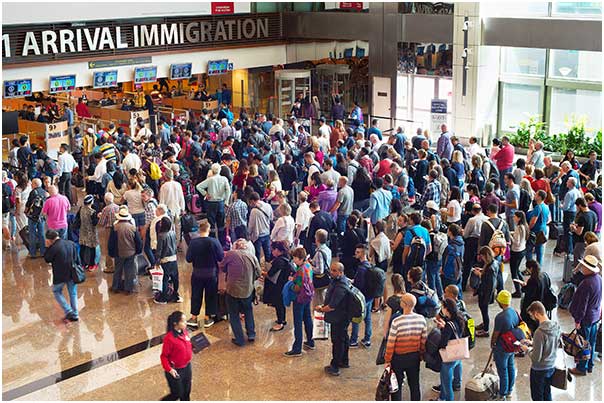The Marrakech Compact on Migration: Myths & Realities

BANGKOK, Thailand, Jan 29 (IPS) - Paul Tacon is Social Affairs Officer, Social Development Division at the UN Economic and Social Commission for Asia and the Pacific (ESCAP)
When 164 UN member states adopted the Global Compact for Safe, Orderly, and Regular Migration (the Marrakech Compact on Migration) on 10 December last year, I read on social media that they had decided to give up control over migration to the UN.
So, did that mean, as someone who works on migration in the UN, I could pick and choose who gets to go where?
In that case, the possibilities seemed endless. One country looking overcrowded? No problem – let's just send people abroad!
Not enough workers coming into the workforce to replace those retiring? Bring in young people elsewhere in the region who are struggling to find jobs!
People facing natural disasters? Easy-peasy – send ‘em out of harm's way!
But when I logged into my computer the next day, imagine my surprise when there was no "Move People" button. Surely some mistake?

I called IT, who claimed to have no idea what I was talking about. I wrote to my boss, but she said something about me "misunderstanding the whole point of the exercise."
And António Guterres never replied to my email.
What was going on?
How it actually works
What was going on, of course, was that the UN was operating, as it always does – in full respect of the sovereignty of its member States (it's right there in the Charter – and the Compact!)
So, despite what those social media posts say, neither I nor any of my colleagues were ever going to move anyone. We weren't going to tell anyone how to run their immigration systems, or to force any country to take anyone.
The Marrakech Compact on Migration is explicit – it is non-legally-binding.
Instead, member states set themselves an agenda for action on international migration that they negotiated among themselves throughout 2018.
They agreed that they had a common understanding on migration, shared responsibilities and unity of purpose. They recognised that migration is a reality as old as humanity that must be acknowledged and addressed so that everyone can benefit, migrant and non-migrant alike.
They reminded us that any instance of international migration inherently involves at least two countries – an origin and a destination – and no State can manage migration alone.
Thus, they agreed to work together with the help of the UN to build on the work they had already done to improve the outcomes of migration. In short, they wanted to make sure that:
- migration is a choice;
- it brings benefits to the communities that migrants come from, and the communities they go to; and
- it contributes to sustainable development for the benefit of their citizens, and in the spirit of common humanity that unites us all.
Out of this shared vision, they built a cooperative framework with 23 objectives and 194 suggested actions, grounded in existing international agreements (which they themselves had negotiated and ratified) covering everything from data to documents, border security to decent work, skills to services.
That means I don't move anyone, anywhere. But I get something better: the chance to work with member states and others, to contribute to a world where every migrant's move is voluntary, empowering and beneficial for all.
Migration realities in the Asia-Pacific
This matters for the Asia-Pacific region. It is a migration hub, home to 62 million migrants in 2017 – more than the population of Myanmar – and the origin of over 101 million migrants – more than the population of Viet Nam.
Given the scale, what happens to migrants to and from the region makes a big difference, and not just to migrants. These migrants sent over $316 billion in remittances in 2018 to their families, contributing to poverty reduction.
The majority of these migrants also worked, contributing to growth, productivity and employment creation in their countries of destination. Many countries in the region would be worse off without migrants, especially as their workforces age.
But migrants also face major challenges. Many are recruited by middlemen who make false promises and charge inflated fees, locking migrants into cycles of debt.
They are vulnerable to exploitation by employers who know that they would rather suffer underpayment and overwork rather than risk deportation by denouncing those who were abusing them.
Finally, migrants everywhere suffer the effects of xenophobia – not least exemplified by the coverage of the Compact itself.
The effects of these problems are huge. They violate migrants' rights and can even lead to human trafficking. They also limit the contributions migrants can make to sustainable development.
So safe, orderly and regular migration matters for this region. Going forward, ESCAP will work with its partners in the UN system, civil society and beyond in support of its member States to help them make it a reality.
Not by telling countries what to do, but rather by supporting dialogue, building capacities and working together.
© Inter Press Service (2019) — All Rights Reserved. Original source: Inter Press Service
 Global Issues
Global Issues